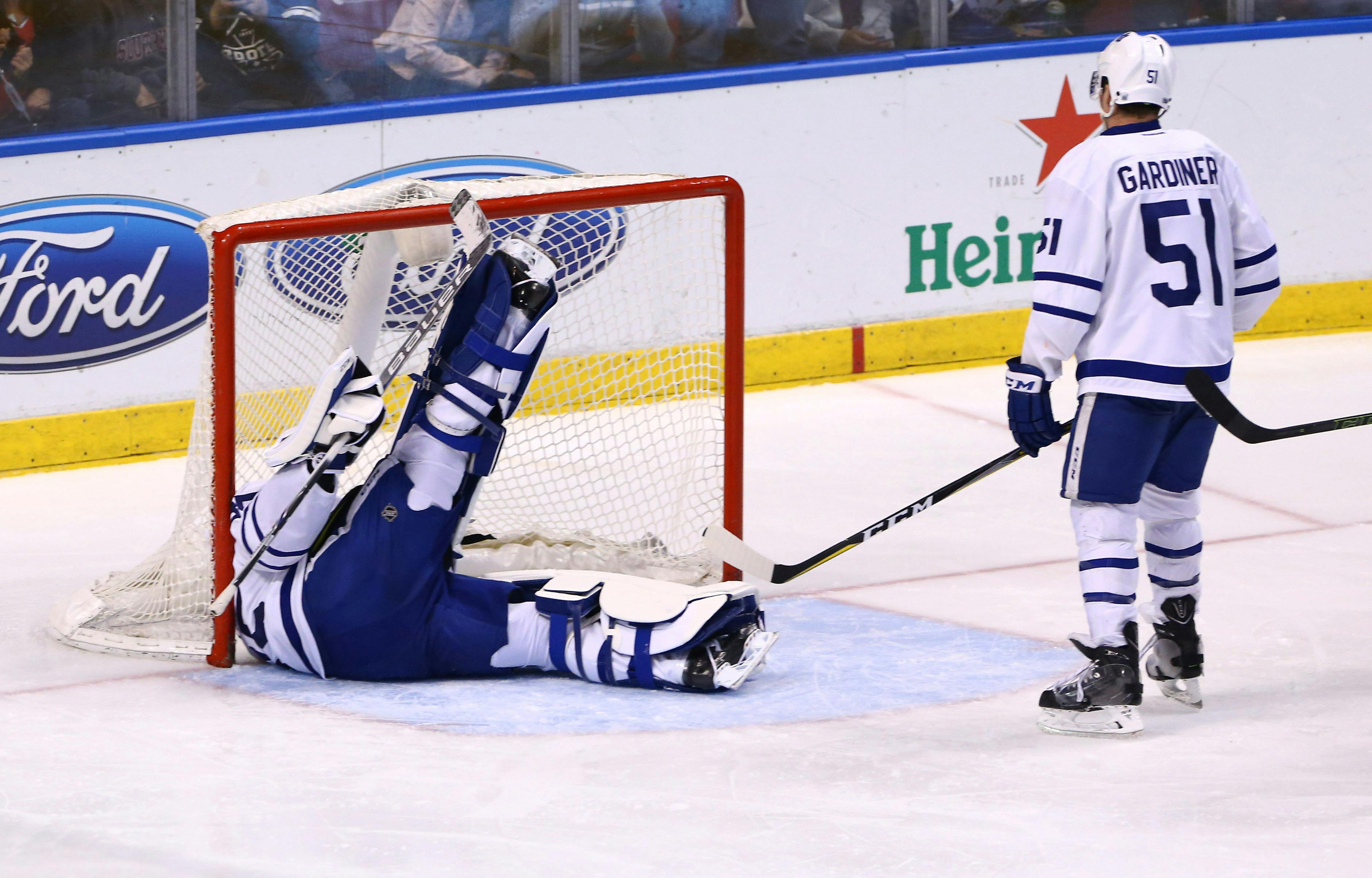Curtis McElhinney should be on the thinnest ice

By Ryan Fancey
6 years agoLet’s just get this out of the way: Curtis McElhinney was a fine backup goaltender for the Leafs last season and came up huge in a couple crucial games. Considering he was just a waiver claim, we couldn’t have expected more from him in his 14 starts for the blue-and-white. That save on Crosby to essentially lock up a playoff spot was incredible. Kudos to him.
We’re clear on that? Okay. Now let me be clearer on this part: McElhinney should not get a long look as the Leafs’ backup this season if he starts to struggle, and like Jhonas Enroth, who he replaced, Toronto should demote him quickly if things go sideways.
Based on how awful he was in his first appearance in this preseason against the Senators, we have an idea of how that looks when things go bad.
The thing about McElhinney that shakes most people’s confidence in him is that historically, he isn’t that good of a backup – he’s had a .905 career sv% to this point, well below the league average over the last decade. He did fine in a limited sample last season, and the Leafs benefited, but based on his entire body of work it’s tough to expect those kinds of performances from him in the medium term. Add in the fact he’s 34-years-old, and yeah, it makes for nervous times.
Taking an even deeper dive into his numbers, you see that his low danger save percentage is good to great, you don’t have to worry about him from that regard. If you’re able to keep him on the perimeter, you should be fine. His high danger save percentage is where it all gets tricky.At the very low end of the spectrum of high danger save percentage are players who hover around .730 in those scenarios. An average to good goalie puts up something around .810-.830 depending on the shots they faced. McElhinney from 2007- to the end of the 2016 season, had a high danger save percentage of .759. That puts him behind netminders like Dustin Tokarski and Justin Peters, once again fantastic company.
If the plan is for Freddie Andersen to play 70 games this season and all of the playoffs, of course there’s a chance McElhinney can put together a dozen games of average goaltending like he did last season, but partly for the same reason – that limited amount of appearances – he should be given the shortest of leashes.
Rewind to the backup situation before McElhinney’s arrival last season; Enroth started in four games, appeared in six, and was absolutely dreadful in that limited time – posting an 0.872 save-percentage. The Leafs bailed on him after November, which obviously turned out to be the right decision.
This is the thing about these high workload starter situations that Toronto finds itself in. If the Leafs want to lean heavily on Andersen, and don’t want to spend money on a backup, the competition for that spot has to be just that: a competition, continually.
The way they look at that position needs to be fluid. If McElhinney starts slow, like Enroth did, Toronto can’t just throw their hands in the air and hope he’ll bounce back. They’ll need to get someone in there internally, like Garret Sparks, and see what he’s made of, or bring someone from the outside in quickly. McElhinney can be waived and subsequently buried in the AHL with the entirety of his cap hit (850K).
This could create what seems like a carousel situation, but cycling through some options while Andersen is healthy might prove fortunate in the case that he suddenly isn’t. McElhinney, Sparks, a waiver claim, or the trade route, there’s a chance the Leafs look down all these roads in the first couple months of the season, and if they do, we shouldn’t panic.
Recent articles from Ryan Fancey





